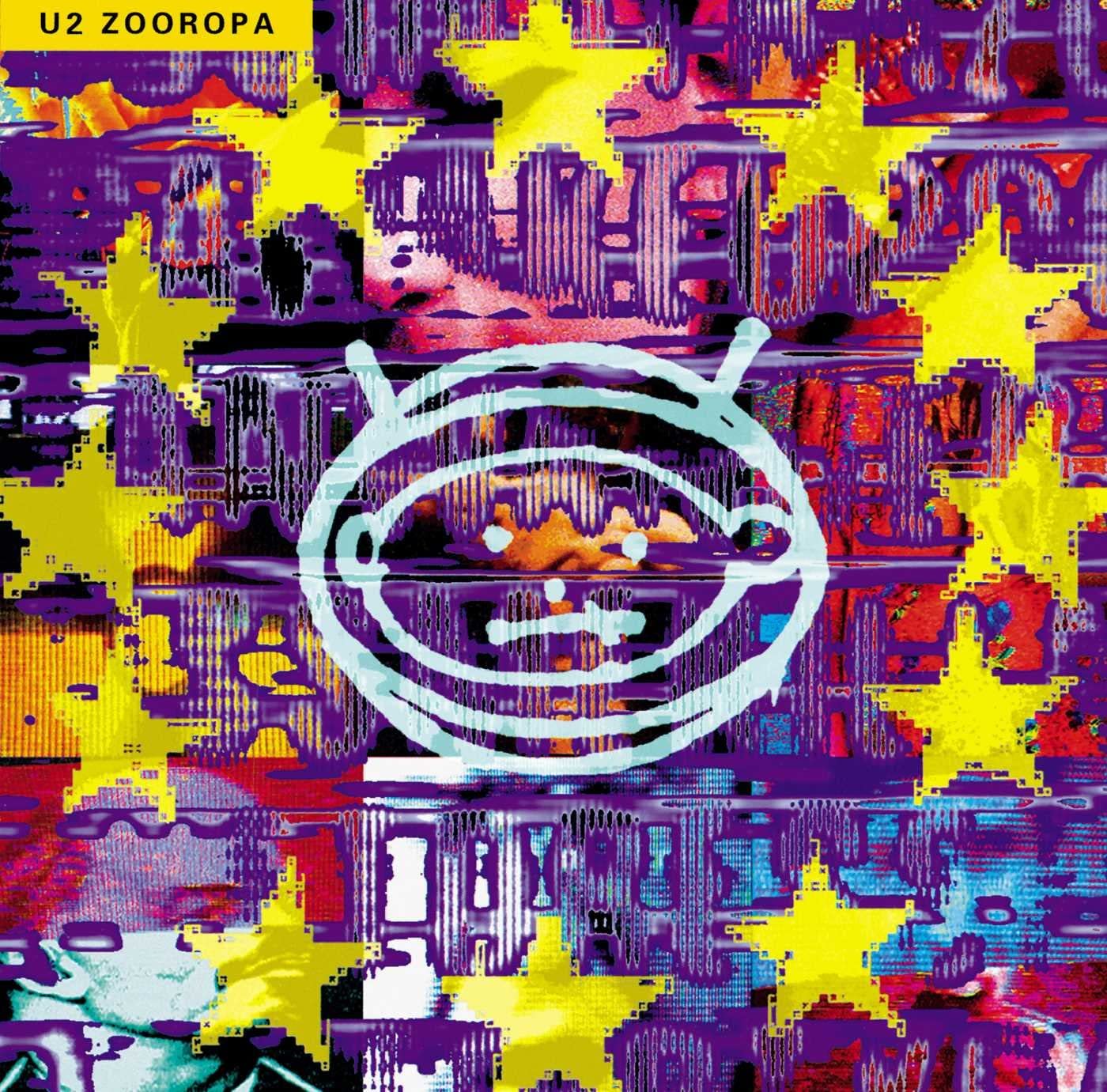
U2 | ZOOROPA
Zooropa was essentially a B-side album to it’s perfect predecessor, Achtung Baby. How does a band follow up an album so glorious and full of life? With about half an album’s worth of material equally as good.
U2 was the biggest band on the planet at the time and the early 90’s were quickly becoming more intricately laced with expanding sounds in rock music. 1993 alone saw releases from Smashing Pumpkins, PJ Harvey, Radiohead, Snoop Dog, Wu-Tang, Bjork, and of course Nirvana’s last mark on the world, In Utero. Zooropa was among the highlights of the year not just because it was the new U2 album, but because it continued Bono’s obsession with media messages, television, news, and video culture. The Zoo TV concept seemed to feel right at home in the Bush senior era.
The album itself is really half an album in quality. It’s not perfect and there are some forgettable moments. But the highlights make it a delicious listen and have planted a fond memory of it in our hearts. “Lemon” is a sad-disco trip into new territory for the band. An organ/guitar sputters through a dry drum beat while Bono coos in a sultry falsetto. The chorus ranks up there with one of the most stirring U2 moments of all-time, as Edge sings “Midnight, is where the day begins” over bono’s dreamy crying. The unusual black and white video is an essential part of the effect.
“Numb” is an experimental monotone drone featuring Edge on lead vocals. It’s peppered with television snippets in the background and feels like someone left a video game on in the next room. “Babyface” starts out with a pristinely clean keyboard track and smacky drum sound. It’s verses are as good as anything on Achtung Baby, but the chorus curls up in its shadow. The obvious standout on the album is the balled Stay (Faraway So Close) which forgives the entire album for not being as well-written by its magnificence. The entire album (and U2’s entire catalogue afterward) peaks with the last chorus and outro. While Bono sings the final “oh oh oh’s” in falsetto, the band choir is signing the same melody in full throat. This contrast brings simply brings tears to the eyes. As the song comes to a close the background vocals continue while Bono closes out the song, coming back down to Earth to quiet down after all the soaring. At last it ends with a final cymbal crash with a snare hit, an abrupt end. The angel has hit the ground.
The rest of the album is enjoyable but not legendary. Strangely, Johnny Cash shows up by the final song to trod a country note to the LP’s flare. When thinking back at U2’s canon, Zooropa feels important but not life-changing. Arguably it is the last point they ran out of a certain steam that was propelling them. It seems in the albums to follow (Pop, All That You Can’t Leave Behind, How To Dismantle An Atomic Bomb) there was a growing sense of self-awareness which marred the innocence of their work. Once a band becomes self-aware, they start to make musical decisions based on what we “think” they should be doing, instead of what they want to be doing. There were still great tracks to follow, but its clear the band simply couldn’t unawaken to being the biggest band in the world and just try way too hard.
This is U2 that forcefully put their new album on every iPod in the world. The band that wants to be relevant. Revisiting the early 90’s era of U2 is like seeing the last twinkle and spark of something special. The colourful packaging on Zooropa is bright and exciting, and adds to the fever-dream of the album. Every album cover since has been draped in greyscale.
The Zooropa
2 oz Citron vodka or regular vodka
1 oz Cointreau
1 oz fresh lemon juice
1.2 oz simple syrup
3 oz Champagne
*Pour all ingredients except the champagne into a shaker with ice and shake well. Strain into a chilled martini glass. Top with champagne. Garnish with a lemon peel and a purple flower.

